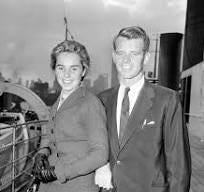While it is now well known that the Nazis looted a large amount of art during the Second World War, few understand the breadth of their crimes. Still fewer are aware that Stalin’s army claimed an enormous number of works as spoils of war at the end of WWII that they have not returned.
A 2020 article in Apollo Magazine by Jessica Loudis illustrates the point:
By the end of the Second World War, an estimated 20 per cent of all the art in Europe was in Nazi possession…More than 60 years after the war, more than a million artworks taken from Germany by the Red Army at the end of the war are still being held in Moscow and St Petersburg.
This was no secret to the United States intelligence apparatus. But what the Central Intelligence Agency (CIA) did not know what was exactly which works had the Soviets taken. With The Hermitage closed to Westerners at the onset of the Cold War, and other pressing business to attend to, the agency hadn’t developed a source to provide reliable intel on what was inside the massive museum’s multi-million piece collection.
Enter Ethel Kennedy. The widow of former Attorney General Robert F. Kennedy and the mother of eleven children, she knew both great glory and terrible tragedy. Her name evokes images of her playing touch football in Hyannisport; smiling widely at the famous Kennedy women’s teas; and, sadly, crouching alongside her husband as he lay mortally wounded on the floor of Ambassador Hotel’s kitchen in 1968. She’s remembered as maternal and loyal—a true icon of her era.
Few, however, know her as an art spy. But in 1952, when she, her husband, and three sisters-in-law, visited the Soviet Union and were granted a visit to The Hermitage—the first Westerners permitted a visit after WWII—she was asked to be just that. She jumped at the chance, wrote her son Robert Kennedy, Jr. in her eulogy, out of a mix of patriotism and a “natural inclination to mischief.”
In a plot that preceded any of the James Bond novels, the CIA provided Ethel with a corsage equipped with a hidden camera that she could use to photograph the art hanging in the Soviet state museum. She did so at great risk: if she had been detected, she faced severe punishment. At the very least, it would have caused an international incident.
Ethel pulled off her assignment with the skill of a real-life Emma Peel. She snapped roughly 100 photos that she later delivered to Langley where her cache of intel was met with great excitement. "We looked through all the photos. They had no idea about the extent of the Russian collection. They were all very excited, so that made me happy," she recalled.
It would be interesting to see if any restitutions—public or otherwise—came from her efforts and the end of the Cold War.
Ethel Kennedy met her great reward in 2024. She lived a life so historic that this episode has all but gone unnoticed.



